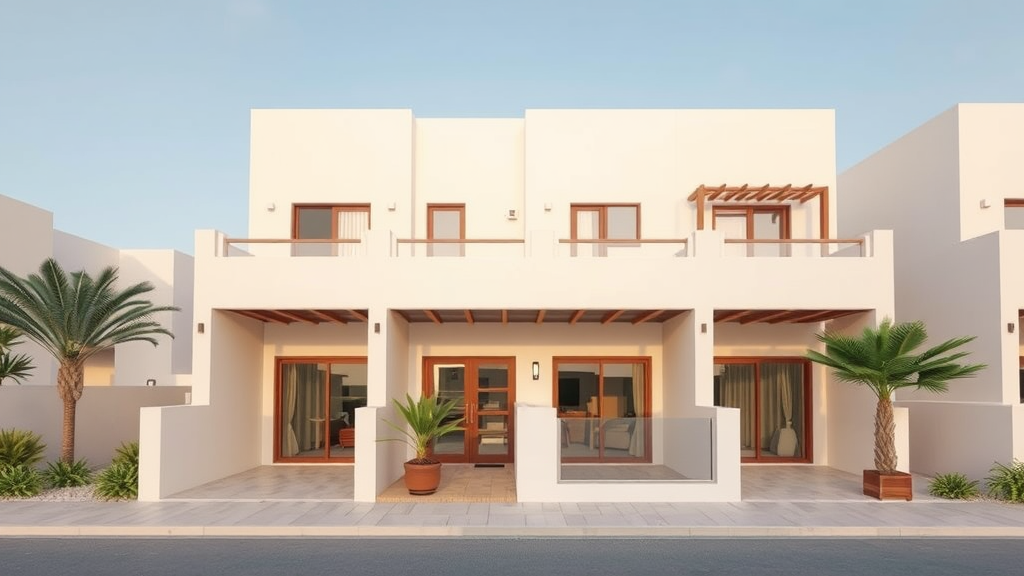Common mortgage and installment plan combinations used by norwegian investors
Norwegian investors have a variety of options when it comes to financing their real estate ventures. Understanding the common mortgage and installment plan combinations used can help you make informed decisions and optimize your investment strategy. Below, we explore popular combinations and how they might suit different financial situations.
Fixed-rate mortgages
One of the most popular options among Norwegian investors is the fixed-rate mortgage. This type of mortgage locks in an interest rate for the entire term, typically ranging from 10 to 30 years. This stability can be an attractive feature, especially during uncertain economic periods. Fixed-rate mortgages allow investors to plan their budgets effectively, as monthly payments remain consistent.
Variable-rate mortgages
Contrarily, investors may also consider variable-rate mortgages. These loans have interest rates that can change based on broader economic factors, such as central bank rates. While they can offer lower initial rates than fixed options, they also carry the risk of increasing payments over time. This combination can be ideal for investors looking to capitalize on short-term gains while being willing to accept the risks associated with fluctuating rates.
Combination loans
Some investors mix fixed and variable mortgages to create a combination loan. This strategy provides flexibility and a balance between risk and stability. Typically, a portion of the loan is on a fixed rate while the remainder is set as a variable rate. This arrangement allows investors to benefit from the initial low rates of variable loans while having a secured portion that provides predictability in payments.
Installment plans for property purchases
Beyond traditional mortgages, installment plans are becoming increasingly popular. These plans allow you to pay for your property in fixed installments over time, which can be more manageable than a lump-sum purchase. Here are common installment strategies:
- Deferred Payment Plans: With this option, payments are postponed for a certain period. Investors can use this time to increase their cash flow before starting payments.
- Equal Installment Plans: Payments are divided equally over the term of the plan. This leads to a set monthly payment, making it easier for budgeting.
- Graduated Payment Plans: Payments start lower and increase over time. This is beneficial for new investors expecting their income to rise.
Leveraging public programs
Norwegian investors also benefit from various government programs designed to promote home ownership and investment. These public initiatives often come with lower interest rates, making mortgages more appealing. By leveraging these programs, you can combine affordable financing with strategic purchasing methods to maximize returns.
Real estate investment trusts (reits) and mortgages
Another interesting approach for investors involves using mortgages in conjunction with investing in Real Estate Investment Trusts (REITs). This unique combination allows you to utilize borrowed funds to purchase shares in REITs. While REITs provide dividends and the potential for capital appreciation, mortgages can amplify the returns on investment when executed properly.
The 80/20 rule
The 80/20 rule is often applied in real estate investment, where investors put down 20% of the property’s value while financing the remaining 80% through mortgages. This method not only allows you to acquire property with a smaller upfront investment but also maximizes your leverage on the investment. Thus, you’re able to diversify your portfolio across multiple properties.
Tax considerations
It’s crucial to understand how taxes impact your mortgage decisions. Interest payments on mortgages are often tax-deductible, providing an additional incentive for investors. Knowing the tax implications can help you choose the right type of mortgage or installment plan, as certain structures may yield greater benefits based on your income level and investment strategy.
As you explore these combinations, consider working with a financial advisor. They can help tailor your mortgage and installment plan selections to align with your investment goals. This personalized approach can maximize returns while ensuring you remain comfortable with your financial commitments.
Factors influencing mortgage choices among norwegian property investors
When considering investment in property, Norwegian investors face various factors that greatly influence their mortgage choices. Optimal financing is crucial in this context, as it determines the feasibility and profitability of the investment. Here are several key factors that shape mortgage decisions among Norwegian property investors.
1. interest rates
Interest rates play a significant role in shaping mortgage choices. Lower interest rates are appealing, as they reduce the total cost of borrowing. Investors monitor changes in central bank rates or financial market trends to select the best time to secure a mortgage. Many choose fixed-rate mortgages to lock in lower rates for an extended period, providing predictability in cost, while others may lean towards variable rates in seeking savings.
2. loan-to-value ratio (ltv)
The loan-to-value ratio refers to the percentage of the property’s value that is financed through the mortgage. A lower LTV is often associated with better interest rates and terms. Investors may opt to provide a larger down payment to achieve a more favorable LTV, thus increasing their options for better mortgage products.
3. property type
The type of property also influences mortgage choices. Residential investments usually have varied financing options compared to commercial properties. For instance, while investors might seek longer repayment terms for rental homes, commercial property loans often have different requirements and can carry a different risk profile, further impacting the terms of the mortgage.
4. investment strategy
Your investment strategy directly impacts mortgage selections. If you plan to renovate and flip a property quickly, short-term financing may be ideal. Alternatively, buy-and-hold investors might prefer long-term mortgages to secure stable cash flow over time. The overall strategy should align with the mortgage structure to ensure optimal financial performance.
5. economic conditions
The broader economic landscape influences investor confidence and financial decisions. During economic growth, you may find more competitive mortgage offerings as lenders become more willing to extend credit. Conversely, an economic downturn may lead investors to adopt a more conservative approach, opting for safer loans with lower amounts.
6. government policies and incentives
Government policies, such as tax incentives or subsidies for first-time homebuyers, can impact mortgage choices. These programs can make specific types of financing more appealing. Investors should stay updated on available benefits that can affect their overall investment strategy.
7. personal financial situation
Your financial profile affects mortgage options. A strong credit score can lead to lower interest rates, while a high debt-to-income ratio may limit choices. Investors often analyze their current financial situation, including savings, income, and debts, to determine the best mortgage path. Maintaining a healthy financial standing is crucial for accessing the best financing options.
8. flexibility and terms
Mortgage terms can vary significantly in flexibility. Some investors seek mortgages with options for early repayment, which can save money in the long run. Assessing different mortgage products for flexibility allows investors to tailor their financing solutions based on changing future needs.
9. market trends
- Supply and Demand: Local real estate markets can drastically affect property values and, consequently, mortgage options.
- Rental Demand: Regions with high rental demand often see more competitive mortgage conditions due to strong cash flow potential.
10. professional advice
Professional guidance can steer investors toward optimal mortgage solutions. Real estate agents, financial advisors, and mortgage brokers provide insights that can be invaluable, helping investors navigate complex mortgage products and the intricacies of the real estate market.
Many interconnected factors influence mortgage decisions among Norwegian property investors. Understanding these elements ensures that investment strategies align with financial goals, allowing for informed and profitable investment choices.
Understanding the common mortgage and installment plan combinations used by Norwegian investors is essential for navigating the real estate market in Norway. Many investors prefer flexible mortgage solutions that align with their financial strategies. For instance, combining a fixed-rate mortgage with an adjustable-rate option can provide the stability needed during the initial years, while also allowing for lower rates as interest fluctuations occur. Additionally, the popularity of interest-only loans reflects a preference for lower monthly payments during the investment’s early stages, allowing for reinvestment of the cash flow into additional properties.
Several factors play a significant role in shaping the mortgage choices among Norwegian property investors. Personal financial situations, such as income levels and risk tolerance, often dictate the selection of mortgage type. Moreover, prospective property locations and market trends can sway decisions, as investors seek the most favorable conditions to enhance their returns.
By carefully considering these common combinations and the various influencing factors, you can better identify the ideal mortgage strategy tailored to your investment goals. Whether you are a seasoned investor or a newcomer to the Norwegian market, being informed about these options will empower you to make sound financial decisions that suit your needs. Remember, aligning your investment strategy with the right mortgage plan can significantly enhance your profitability and long-term success in the property market.











